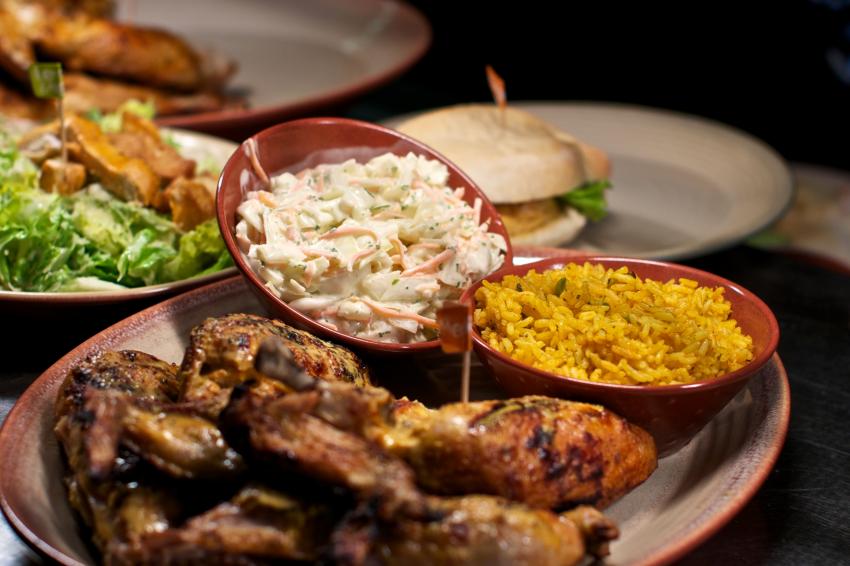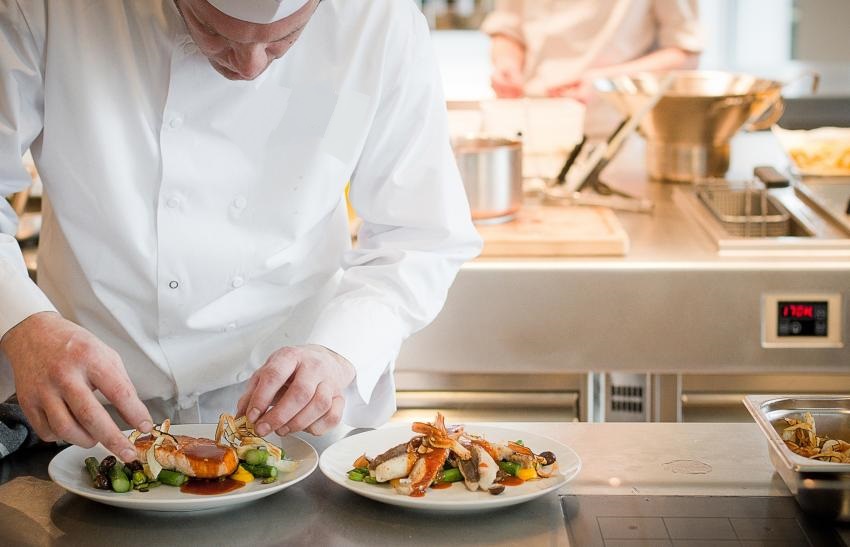Cooling Food in Your Operation: Best Practices
Earlier in the month, I talked a bit about safely thawing food and, in my discussion, I mentioned that thawing and cooling were both problematic practices in the industry that can lead to a foodborne illness outbreak if not done properly. So, I thought I might talk briefly about cooling food. I know we have talked about it previously in our blogs, but it is a very important topic and thus warrants a quick review.
When I started in the industry, I remember the lead prep cook giving me an overview of how “we” safely cooled food at the restaurant. For example, when we took the soup out of the steam jacketed kettle, we would divide it into multiple 2-gallon square storage containers and let it sit on the counter for an hour or two to start the initial cooling. I was instructed we didn’t want to warm up the walk-in cooler too much by placing that hot soup in the cooler immediately. Then, we put in in the cooler, sometimes covered, sometimes not. It all depended on when the morning cooks were leaving that day. If we had a few hours and could cover them up before leaving, we would leave the lid on askew and close before leaving. If we were on our way out the door, the lid was placed tightly on the soup. Looking back with 20/20 vision, it is amazing how far we, as an industry, have come in our knowledge of food safety. Those practices with today’s vision seem archaic, but it was the early-90s and we were nowhere near as advanced and knowledgeable about proper food safety practices as we are now.
When food is cooked, it reaches temperatures that kill most bacteria and pathogens. However, when hot food is left at room temperature for too long, bacteria can begin to grow again. This is the case when we are cooling food – when food must pass through the ol’ Temperature Danger Zone between 41°F and 135°F. Bacteria multiply rapidly in this range, which can result in food becoming unsafe. When cooling, our goal is to pass the food through this zone as quickly as possible.
…when hot food is left in the ol’ Temperature Danger Zone, bacteria multiply rapidly. When cooling, our goal is to pass the food through this zone as quickly as possible.
In the food code, the Food and Drug Administration (FDA) defines proper cooling with time and hour benchmarks. They note that hot food should be cooled from 135°F to 70°F within two hours, and then below 41°F within a total of six hours.
These benchmarks are easy to achieve if you use a blast chiller. But not everyone has the resources to purchase one. Thus, here are some best practice recommendations for cooling food:
Cool Food in Small Portions and Use Shallow Containers
Large pots of soup or stew take longer to cool down than smaller containers of food. Our method of cooling two gallons of soup at the restaurant, I now know was never going to cool in the recommended time. To ensure that food cools down quickly, divide it into smaller portions – one gallon or less. Or pour large pots of liquid food into shallow pans or containers. This allows heat to escape faster and cools the food more evenly.
Use Ice Baths for Fast Cooling
For foods like soup, stew, or sauce, you can use an ice bath to rapidly cool the food down. Fill a larger container with ice and water, then place the food container into the ice bath. Stir the food occasionally to speed up the cooling process and keep the food safe. It is important to remember that this is an active cooling process and that the ice must be replaced as it melts and the food must be stirred. If you let the ice bath warm to the temperature as the product cools, you are simply creating more product to cool below 41°F.
Another option is to use ice wands, such as a the Rapi-Kool Cold Paddle, to quickly cool food. But, again, it is important to remember that this is an active cooling process. We’ve done studies where we’ve utilized the ice wand in the middle of a three-gallon pot of chili and once that ice wand melted and warmed to the temperature of the surrounding liquid, it extended the cooling time dramatically, taking 26 total hours to cool the product below 41°F. Active cooling is key if you plan to use it.
Last, but not least, use a thermometer to make sure food has cooled down to a safe temperature. Test your methods and make sure your cooling process works well for your foodservice system. What works for some may not work for all due to the differences in refrigeration units. Risk Nothing.
READ MORE POSTS
Top Food Safety Websites
You ask…How do I learn about food safety regulation? What pathogens in foods can make me sick? What temperature should I safely cook my roast beef to and how do I take food temperatures? How do I clean and sanitize anything according to the FDA Food Code? What and where is the most recent version of the FDA Food Code? Where can I find food safety educational materials galore in book form or online? Do I need them in Spanish or a Chinese dialect?
A Little Poultry Safety Information
Chicken is the number one species of protein consumed by Americans – we eat about 80 pounds of it per year. Outbreaks of foodborne illness have long been associated with poultry and eggs usually by undercooking it or cross-contamination of other foods by raw poultry. Recent concerns about avian or bird flu put the direct focus on our fowl food with concerns about whether this awful disease can transfer from birds to humans.
The Basic Principles of Food Safety
Every food establishment uses, processes, and sells food in different ways. However, the general issues and key principles of food safety remain the same, whatever the style of the operation. All food safety training programs should contain the “big 3” factors that could cause food to become unsafe. Food must be kept out of harms way from human errors, but if you don’t train food workers what they are, they won’t know why these factors are so important to your operation. The basics can make us or break us in one or maybe two food handling mistakes.
Be Aware When You Prepare – Food Prep Tips
The subject of food preparation covers some very broad, basic principles within food safety, with many steps associated with “risk” in some recipes. Certainly, preparation steps are where the most mistakes have occurred if a foodborne illness should occur. Outbreaks usually happen when more than one mistake occurs during prep, but sometimes it only takes one. Cooking is the biggest risk for raw foods, but all foods become ready-to-eat foods at some point in final preparation steps and that’s where the most care is required.









